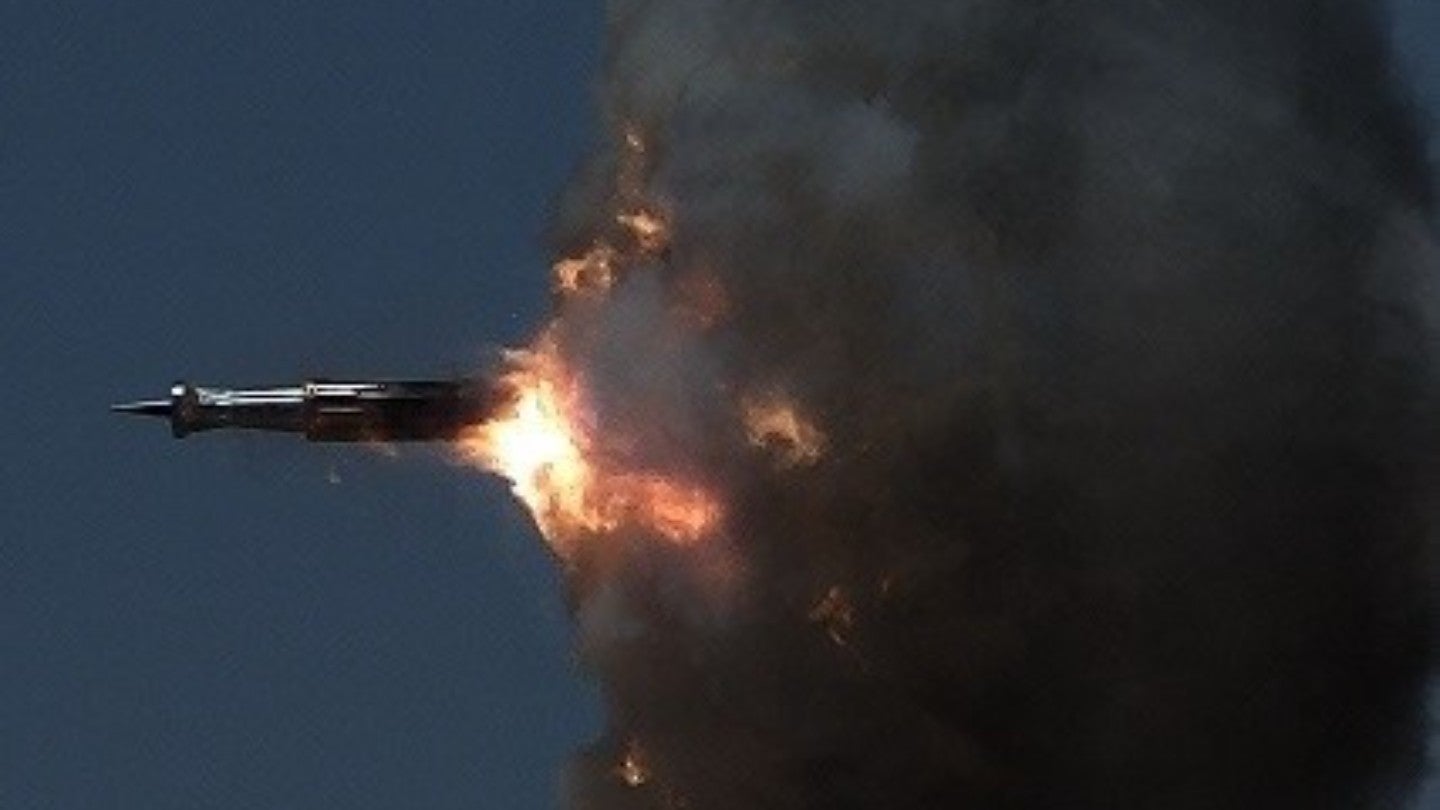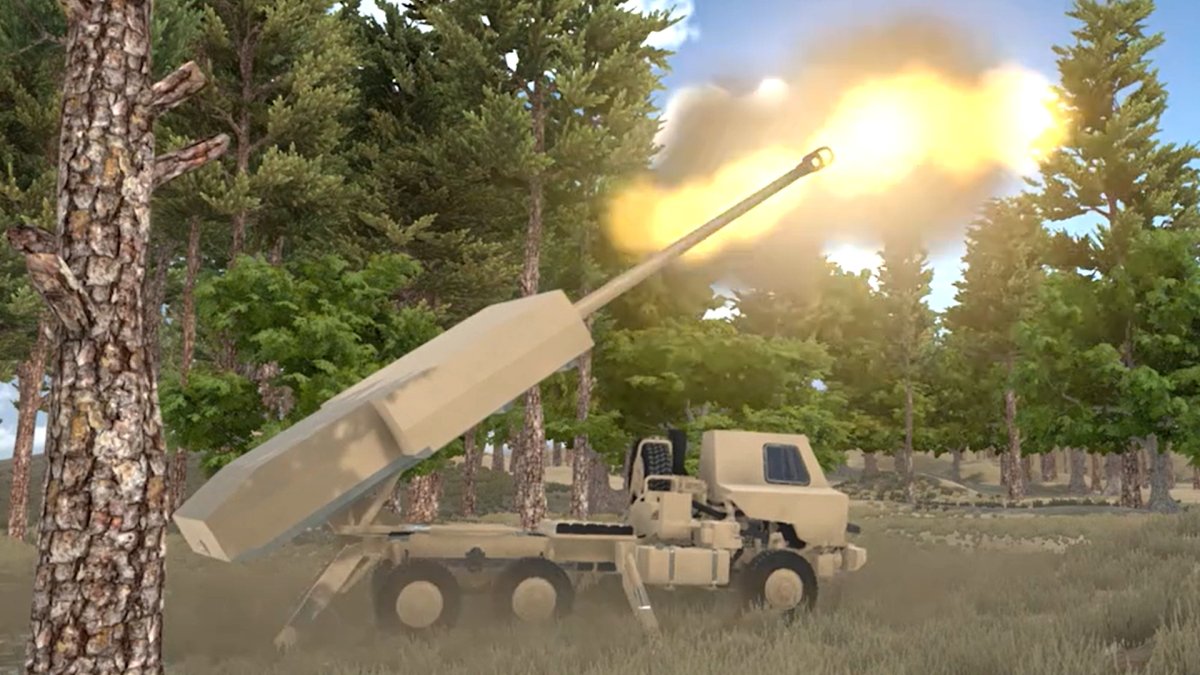- Reaction score
- 18,682
- Points
- 1,160

BAE Systems and US Army test sub-calibre long-range projectile
BAE Systems and US Army have successfully test-fired a sub-calibre artillery long-range projectile with enhanced lethality.www.army-technology.com


BAE Systems and US Army test sub-calibre long-range projectile
BAE Systems and US Army have successfully test-fired a sub-calibre artillery long-range projectile with enhanced lethality.www.army-technology.com
Curious what range you'd get with that munition out of the M109A7 barrel?
109 kilometres.Curious what range you'd get with that munition out of the M109A7 barrel?
Not knowing much about Artillery other than what I read.
So how large of a range would you need to test fire rounds with round with a range of 100km plus?
Almost all artillery testing is done at Yuma Proving Grounds (which includes proof firing of all new guns built - all our M777s were proof fired there). The range is large. I'm not sure if they have an "off site" firing platform that overflies non-range land and impacts there or not.Not knowing much about Artillery other than what I read.
So how large of a range would you need to test fire rounds with round with a range of 100km plus?
The test that achieved 68 miles (109km) was using an ERCA testbed XM907E2 58 calibre cannon. My question was what range the same projectile could achieve using the M284 39 calibre howitzer mounted on the M109A7.109 kilometres.
The L58 barrel is supposed to get standard rounds out to around 70+ kilometres. I've seen articles that talk about the XM 1155 in its Raytheon Ramjet format to be 100+km. I think the project itself calls for a 100-120 km range with an IOC of 2025. I presume if BAE is working on an XM 1155 subcalibre variant its aiming for that as well - 109 would fit. There are other contenders as well. General Atomics is working on a winged version with a design range of 150 kms.


Or keep your guns for close support with a shorter but more durable barrel and use other means for counter-battery and deep fires? Guns give you the high volume area effect required to suppress an area to cover your armour/infantry while precision rockets, NLOS missiles and loitering munitions/UAVs can take care of your deep fires and specific point targets (vehicles, etc.).My guess is the longer ranges come at a price for barrel wear and other issues that come with a long barrel. So do you need all your guns to be able to do counter battery/long range fires or do you optimize some for the shorter range fight with them being covered by the longer range guns who get to conserve their systems by going after specialized targets?
The test that achieved 68 miles (109km) was using an ERCA testbed XM907E2 58 calibre cannon. My question was what range the same projectile could achieve using the M284 39 calibre howitzer mounted on the M109A7.
The reason for my question is that there have been some concerns raised over the barrel wear on some of the larger calibre 155mm guns in Ukraine. I wonder if the M284 might be more durable overall and if the new round might get enough range out of that gun to still outrange enemy longer barreled guns.
Just trying to wrap my mind around the comparative advantages of the M109A7 (tracked and 39 onboard rounds but shorter range), ERCA (tracked and extreme range but only 23 onboard rounds) or Archer (wheeled, long range but only 21 onboard rounds) for the RCHA.
That's an interesting debate. So far the only US units designated for the M1299 ERCA is the one GS battalion in the Armour (Reinforced) division. There I could see the XM 1155 limited to the M1299 while the M109A7s use more common projectiles in close support.My guess is the longer ranges come at a price for barrel wear and other issues that come with a long barrel. So do you need all your guns to be able to do counter battery/long range fires or do you optimize some for the shorter range fight with them being covered by the longer range guns who get to conserve their systems by going after specialized targets?
I agree with @Colin Parkinson about only selected guns doing counter battery work. That's generally the work of MLRS or HIMARS and designated GS batteries (as the ERCA will be) and air power. Those units are optimized with STA resources for that role. The CS battalions, such as the M777 and M109A7 are also equipped with STA resources but these are generally focused on near targets such as mortars or guns that accompany assault forces (such as 122mm 2S1 and, to a lesser extent, the 152mm 2S19). That's not so much a barrel wear issue but rather the fact that CS guns will be staying masked for their own survival and then too busy with the close fight to add much effort to the depth battle. All that said, circumstances can dictate otherwise.

That's a thing that comes and goes. In WW2 we had GS regiments and Fd regiments only had CS 25pdrs. During the sixties we went to four battery regiments, 3 x 105mm and 1 x 155mm as GS. (incidentally there are more issues that differentiate CS from GS one of which is that CS is required to establish coordination and observers to its supported arm. GS just provides delivery systems). Most western armies generally have one CS battery per manoeuvre battalion and one CS arty bn per manoeuvre brigade. GS is generally held at corps as rockets and decentralized as necessary but few armies have corps anymore. The US does and NATO has manufactured some.Which leads one to wonder:
1 - is one CB-GS support battery enough these days - or does there need to be more of them to protect the CS batteries' abilities to engage and manoeuvre
I think most folks have gone to rockets. There used to be more long range guns (comparatively) like the M110 in the old days but those slipped away as rockets got better. The ERCA is a bit of an anomaly. I think initially it was envisioned as replacing the Paladins across the board but that was cut back. I don't know if the present deployment plan with a single battalion per Armor (reinforced) Div is an end-state or an interim measure. My guess is the US doesn't know either and will see how things shake out with it once its been in service for a while.2 - for the CB-GS role is it better to upgun the 155s into a configuration that will require more service due to wear and tear on barrels - or is it more practical just to bring a large Himars unit forward into the Div Arty GS role
I haven't seen much about the 155mm HVP in the GBAD role for some time. This was in the news a few years ago and since then crickets. I wouldn't want to speculate.3 - if the 155 with HVP becomes an effective GBAD asset countering cruise missiles are those HVP rounds to be universally distributed, parked in specialist AAA batteries or issued to dual purpose GBAD-LRPF batteries.
The 88mm was a unique system that just happened to appear at the right time. It's role was really air defence which morphed into an excellent anti-tank gun. It never really became a direct fire support weapon. The Jagdpanther was a limited production based on some left over chassis and really designed as a poor man's tank and not a multifunctional assault gun like the Sturmgeschutz III and IV were.The 88mm was an air defence, anti-tank and direct fire support weapon used by multiple organizations on a variety of platforms.
The US used a HEAT round for their 105 M1A1's in Korea, with the HEAT rounds they were able to knock out T34/85's but the HE rounds were ineffective against them when they ran out of HEAT rounds.Apparently there is a HEAT 105mm howitzer round, the M67.
If that's a video of an M777 in Afghanistan then it was A Bty 1 RCHA on August 2nd, 2006 doing a direct fire mission at a grape hut just south of PB Wilson that was being used by snipers to harass PBW. The range was 311 metres. It was lazed. If you listen closely to the video you can hear a splinter come back to the position. Interestingly the M777 sits almost as low to the ground as the L5 did when in anti-tank mode. The barrel's about 3' off the ground, some of the other bits are a bit higher though. The mission was successful. The snipping stopped.I’ve seen video from when 1 RCHA trialed 155mm HE fired from M777s in the anti-armour role.
I don‘t think it would result in a K-Kill…
Yup we used to fire them back in the 70s. Not every year but every once in a while when local defence against the Soviet Hordes was high on someone's agenda. The round penetrates around 5 to 5.5 inches of Homogeneous steel regardless of range. T-34, had around 2 inches of armour on the front, just under 2 on the sides and just over 2 on the turret front. The big issue was its 60* slope on the front. The M67 skids off at around 30 to 35*.Apparently there is a HEAT 105mm howitzer round, the M67.
The US used a HEAT round for their 105 M1A1's in Korea
That's where I think an NLOS Missile or Loitering Munition launcher would be a potential replacement for a long range gun. The advantage of something like a loitering munition is that it is launched to the location where the enemy fire originated THEN be able to identify and attack a target.While HIMAR's and other MLRS are great to have, I doubt we will every have enough launchers and munitions to meet all our needs, so I would still look at a battery of very long range guns to fill in that role on the closer but still far to the rear targets.
